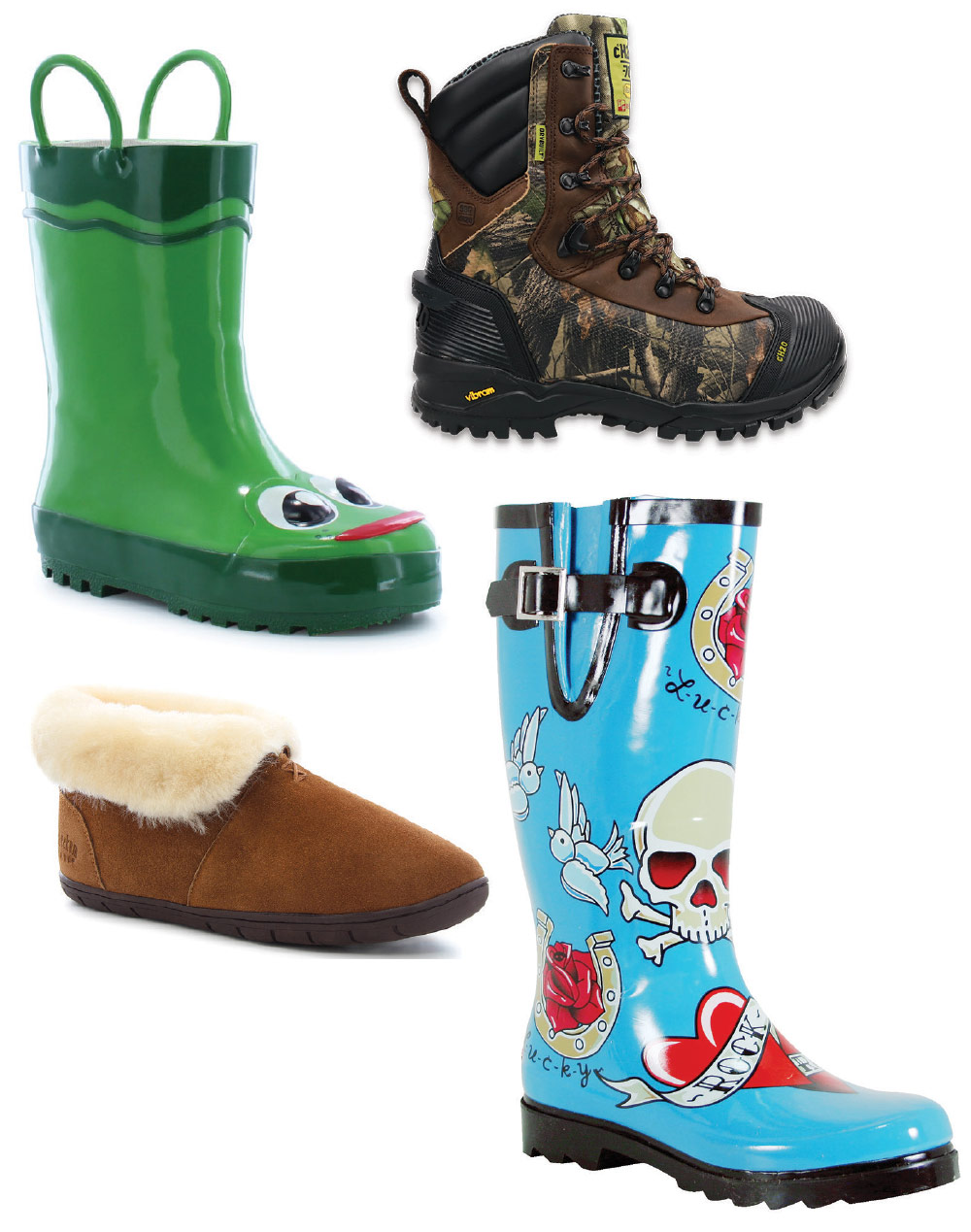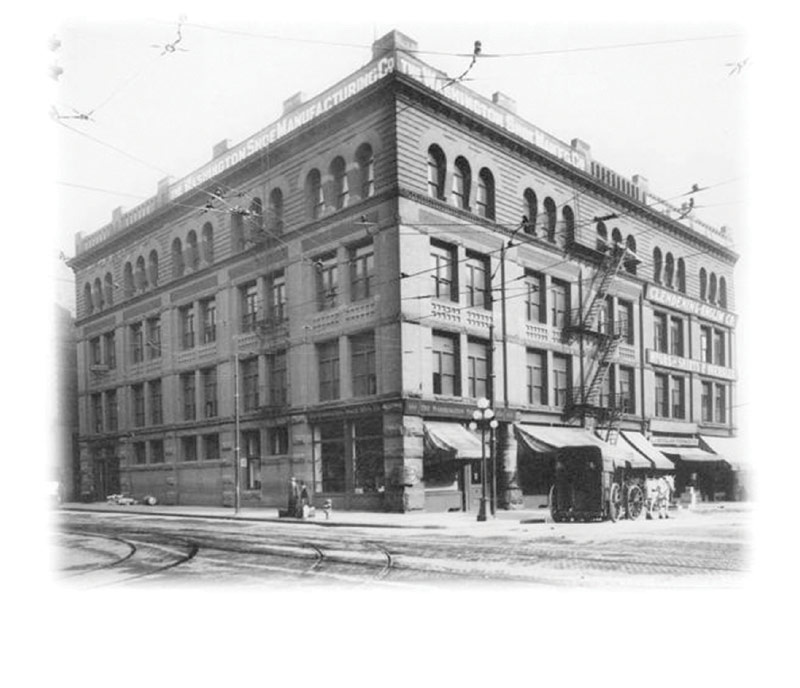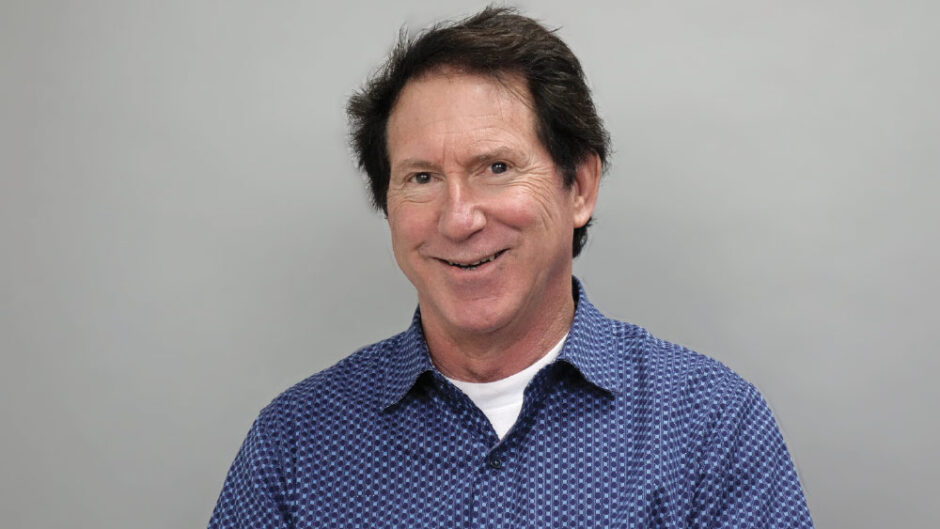
Maybe it’s the German heritage. Determined. Industrious. Relentless. Perhaps it’s also the Pacific Northwest pioneer spirit passed down from two generations of shoemakers who emigrated to the then-rugged and remote region in the late 1800s and carved out a niche making one tough logger boot at a time before expanding into a full range of styles for men’s, women’s and kids’. Or maybe it’s being a lifelong resident of the Seattle area, home of legendary startups—like Microsoft, Nordstrom, Amazon and Nirvana—that went on to change the world. Whatever it is, Rob Moehring has a bulletproof constitution coupled with a never-ending drive to dream—big. He never quits. Don’t even bother telling him something can’t be done. And he’s always thinking about the next creative endeavor, be it his iconic kids’ 3D-molded rubber rain boots (Western Chief) introduced in the early ’90s or last year’s launch of the performance outdoor/work brand CH2O at a career level and age when many execs would long have been on cruise control or checked out entirely.
Not Moehring. He’s just getting started. His industry enthusiasm, talents and entrepreneurial spirit are as strong as they were the day he purchased Washington Shoe Company from his father and uncle in 1990—when he had to re-build the business from scratch. (More on that soon.) In fact, Moehring began honing his talents for selling shoes and spotting trends as a kid, working in the family business and learning tricks of the shoemaking trade from his grandfather, who he says was “an amazing merchant.” Moehring also made his shoe bones working in local stores throughout high school, college and, after earning a degree in education and teaching at a local experimental elementary school, during vacations and summers. They included stints at Kinney Shoes, Thom McAn and the Marshall Fields spinoff Frederick & Nelson. “That’s where I really got my education and feel for shoes,” Moehring says. “It’s where I learned how to spot trends and pick great shoes.”
Working retail is where Moehring caught the shoe bug. While he loved teaching, the pay was limited and, much more important, shoes were in his blood. “The minute I started selling shoes, I loved it. I love shoes and I love talking about shoes,” he says. “When I worked at Frederick & Nelson, we sold high-end boots out of Spain, and when that shipment arrived…man, the smell of leather just lit me up. It was amazing; there’s something instinctual about that.”

Western Chief 3D-molded frog boot; CH20 hybrid hiker/work boot; Chooka “Tattoo City”
rain boot; shearling-lined slipper by Staheekum.
That smell of the leather, in essence, is what lured Moehring back into the family business full-time in 1974. It surely wasn’t about taking an easier path or expecting quick riches. Far from it. Washington Shoe Company, then a distributor of shoes to area retailers, was in trouble, and the son with the shoe savvy was enlisted to save the day. “My father was holding his money too tight,” Moehring recalls. While his grandfather would go on one-month shopping trips to various Midwest and East Coast factories twice a year and buy all the inventory he needed for the next six months, Moehring’s father would make those same trips and only buy samples, then have his salesperson try to obtain orders. “Our competition would have the inventory the same time we’d only have samples, and that was really hurting our business,” he says. Then the company’s lone competent salesperson quit. “That’s what really got me into the shoe business,” Moehring says.
The story that follows is one of grit, ingenuity, creativity, passion, desperation (at times), adaptability, rebuilds, family, loyalty and everything else that comes with running a now fourth generation–operated shoe business. Moehring’s career is an inspirational tale of survival. His steadfast determination to overcome all obstacles, to adapt and evolve, and to never stop dreaming is admirable.
Items and Importing
When Moehring jumped on board as a salesman, he cut to the chase, buying hot shoes he spied at the local Nordstrom and sending them to factory partners to get samples. Not only did this speed up timelines, Moehring had a knack for picking winners. Sales quickly started to grow, and increased when he started attending shoe shows where he could see more product.
It was time to think bigger, and Moehring led the charge to import products from Taiwan to increase margins and order bigger quantities, needed when Moehring started opening national accounts, including Walmart, Edison Brothers and U.S. Shoe Corp. An “item-oriented guy,” he was introducing fast fashions under the Temptations label. Early successes included metallic, faux snakeskin penny loafers and a black patent penny loafer with a white Phantom of the Opera mask on the vamp. “That shoe was just on fire,” Moehring recalls. “We became an item business—I’d see it and then go do it.” Business was good. “Our company was doing well. My dad was fine with signing order checks to me and depositing those from our customers,” he says.
Around 1983, one of Washington Shoe Company’s Taiwanese agents launched his own company, Prima Royale, which quickly became a go-to sourcing partner. Soon after, Moehring started chasing his next big item—a take on Zodiac’s patchwork colored boat shoes. “That’s what got me into Edison Brothers, Wohl Shoe Company and U.S. Shoe Corp.,” he says. “I became known as the West Coast knockoff person, because back then the big import companies were based in New York and a lot of retailers here couldn’t get product from them. I also gave it that West Coast spin.”
Denim Daze

It was now the late ’80s and Seattle had become the world headquarters for denim—Britannia, Genera and Union Bay, among other companies, were based in the Emerald City. Moehring, always seeking the next big trend, had a neighbor in the jeans business who tipped him off about the upcoming season’s trends. One such tip was acid wash and chambray denim, so Moehring put together a collection of boots using the fabrics. It became another big hit. Around the same time, he created another hot item by doing a take on a Japanese brand’s cowboy boot with a jeans pocket on the side.
Washington Shoe Company was now deep into denim shoes, as well as canvas sneakers. Denim styles in a range of colors were selling well as was an 8-inch denim tennis sneaker hi-top featuring two straps similar to a combat boot. Sales were humming along—until the overwashed denim debacle.
Expectations for overwashed denim were huge, per Moehring’s tipster. Moehring bet big and sold Edison Brothers four containers worth. Unfortunately, the clothing bombed. When Edison Brothers canceled the order on the last container because it was late, Moehring’s father and uncle “freaked out.” It marked the beginning of the end of Washington Shoe Company. Even though he sold the canceled inventory at over cost, his father and uncle “just couldn’t understand the risks; it scared the hell out of them.”
So Moehring again shifted gears, leading the company into jobbing branded athletic shoes—a less risky business strategy. Over the next few years, he bought closeouts from Puma, Adidas and LA Gear, among others, because a lot of stores couldn’t buy first runs from those brands. Moehring was also able to sell individual JCPenney stores urban branded closeouts like FUBU. Still, his father and uncle were frayed by the overwashed jeans fallout. To Moehring’s surprise and dismay, they decided to shut the company down and retire in 1990.
Moehring had invested too much blood, sweat and equity rebuilding the then 99-year-old family business to let it fade into shoe industry history, so he worked out a deal with his father and, for $40,000, bought the company name and leftover inventory. He was also given six months free rent but told he would have to vacate after that because his father was selling the building.
Faced with the challenge of rebuilding Washington Shoe Company from scratch, Moehring enlisted his wife, Val, and son, Mark, as employees number two and three. They moved to temporary offices in a Seattle mini storage facility housed over a methadone clinic that included another Seattle startup—Pearl Jam—rehearsing on the floor above. His in-laws volunteered to manage the warehouse, while junkies often slept in the communal halls. “My mother in-law was a Midwestern clean freak; we had the tidiest warehouse you could imagine,” Moehring recalls. To save money, they shipped small orders wrapped in butcher paper. “She’d wrap them beautifully—just like Christmas presents.”
Moehring, though, faced serious startup challenges—like having to secure a $400,000 bank loan out of the gate to fulfill a bunch of JCPenney orders for his latest hot items, snow joggers and moon boots. Ultimately, he found a way, as he had done countless times before. “I was able to get the financing, and those orders really helped me get started,” he says. “I became a snow boots magnate.”
Around the same time, Moehring tapped back into the relationships he’d built during his fast fashion days with Asian factories, two of which included J&L Footwear and JP Original. He would slap Washington Shoe Company on the covers of their catalogs and they’d dropship any orders he received. “That also really saved me in the beginning, because I didn’t need to warehouse any inventory,” he says. Not only did Moehring’s survival tactics keep the lights on, they served as a bridge to what would soon become some of the company’s greatest growth years thanks, in part, to Russians, sheepskin and rain—a trifecta of fate and good fortune that transformed the company.
Boom Bust Boom

The year was 1990, the Soviet Union was kaput and Seattle was hosting the Goodwill Games. Thousands of former East Bloc athletes and fans poured into the city, falling in love with the climate and starving for the-flashier-the-better Western fashions. Moehring, ever the entrepreneur, met some Russians shopping a local trade show and quickly became a middle man between his Asian partners and new Russian accounts. “I started shipping containers of shoes, and it was all an upfront cash business,” he says. “It was a dream, and it took the company to another level.” Moehring had one Bulgarian client who received 50 to 100 cases of shoes a week. “His margins were so great, he didn’t need to go direct to the factories,” he says. “That was a good time.”
Like all good runs, however, it ended. Moehring could see the snow boots trend melting, and the Eastern European companies were shifting to dealing directly with Asian factories. So in 1993 he asked himself, what next? He glanced out his window for inspiration. This being Seattle, it was raining. Why not rubber rain boots? “I figured who knows better about rain than me,” he says. “Not long after, we came out with Western Chief kids’ 3D-molded frog and ladybug boots, and Nordstrom went nuts for them. They just exploded—that was my next big item.”
Abe Rogowsky, owner of Shoe Parlor in New York, says those rain boots were a huge hit. “That’s what put Rob on the map for us. He was one of the first rain boot brands—and at great prices,” Rogowsky says. “We’ve sold it ever since and it remains one of our better selling rain boot brands.” Rogowsky, who first met Moehring back in the mid ’80s during his Village Cobbler days, sensed his relentless drive right away. “He’s smart, aggressive and determined—those are the ones who make it to the top,” he says. “They plug away until they get something and then they capitalize on it. That’s Rob.”
On the heels of the 3D-molded boots run came the sheepskin boot craze, albeit briefly for Washington Shoe Company. In 2003, Carrie Bradshaw in Sex and The City sported ruby red Uggs and the trend went into hyper growth mode. As fate would have it, Western Chief made sheepskin slippers. “The next day I got calls asking if we could make them in ruby red, so I ordered 12 color samples,” Moehring says, noting that Nordstrom was one of the early inquirers. Within two weeks, Moehring came up with a new brand, Chooka, and then met with Nordstrom buyers. They bought all 12 colors, for all stores. “That’s a dream brand launch,” Moehring exclaims. “It was just crazy!”
Unfortunately, the success was short-lived. Moehring “choked on Chooka,” because of a shipping snafu. The air-freighted shipments sat on the tarmac in Chicago for weeks while “everyone known to man in the shoe business jumped on the sheepskin trend” and beat Chooka to market. “There was no way I could even sell that stuff late, so that got me out of the sheepskin business fast,” he says.
Fortunately, it still rained, and Moehring focused on making adult-sized rain boots. In step with the macro utilitarian fashion movement, he turned the ultimate bland boot into a kaleidoscope of colors, patterns and silhouettes under the Chooka label. It’s arguably Moehring’s finest shoe moment, where he was positioned at the forefront of a new fashion category. Thanks also to the popularity of Ed Hardy designs at the time, Moehring’s riffed “Tattoo City” boot, featuring a big heart in the center and “rock n roll” written through it with skulls and crossbones, set Chooka on fire. “Nordstrom was buying whole tables at a time and were infighting over styles with their Brass Plum division,” he says. “They had a rule that they couldn’t carry the same brands, but these were so hot that they allowed an exception.”
The success of Chooka rain boots opened the floodgates of Moehring’s imagination. The rubber shafts served as canvases for him to paint whatever sprung to mind, as well as what he saw trending in the ready-to-wear market. “I’d look at Alexander McQueen, Marni, Missoni, Chanel…and take inspirations from their prints and plop them onto our boots,” he says. “The buyers knew what prints were coming too, so they’d pick various ones and sometimes suggested tweaks. We’d end up with an order for 20 SKUs in four hours.” That’s when Target became a big customer. “I’d send 25 or 30 options and they’d buy 25 styles just like that—in Target quantities. It was crazy,” Moehring says.
Cruise Control
Between Chooka and Western Chief rain boots and gear, Washington Shoe Company has squeezed the reliable category for all it’s worth. Moehring credits the company’s good fortune to seizing the opportunity from the first drop. “I had factory contacts and we’ve always had a good design team that’s acted fast,” he says. “We have on-trend prints—polka dots, houndstooth, florals—a phone book’s worth. We hit on the right formulas and fill-in on new versions each season.”
Success in rain boots—which has included licensed collections devoted to Hello Kitty, Frozen and Batman over the years—has given Washington Shoe Company experience, confidence and a sales foundation to build on. Not all have been home runs, of course, but the company now has a portfolio that includes the Staheekum indoor/outdoor slippers brand and, the most recent addition, last year’s debut of the outdoor performance/work brand CH2O. Moehring’s latest brainchild aims to fill another utilitarian-based niche: people who need the protection of a bulky pack boot packaged in the lightweight versatility of a hiker. “We designed an aluminum shield that reflects heat back into the boot along with 800 grams of insulation that protects up to -70°, and the boots are still lightweight and waterproof,” he says, citing Fleet Farm as one of the first major accounts. “They’ve sold like crazy. The styles sit right next to Merrell and Timberland Pro, at the same price or higher, and have outsold them.”
Moehring is quick to credit his two sons, Mark and Karl, for taking Washington Shoe Company to the next level. As vice president, Mark heads up sales and marketing. “He’s a people person and he gets the word out to everybody,” Moehring says. “It’s what got us off the ground.”
When Washington Shoe Company surpassed $20 million in sales in the early aughts, Moehring realized the company’s needs stretched beyond his skills. “That’s when the visionary is no longer enough to keep a company going,” he says. “You need updated systems, management and controls.” That’s when his younger son, Karl, came into the picture. “He’s a genius at systems, finance and control,” Moehring says, noting that Karl became CEO in 2015. “There’s not a piece of paper in our warehouse now—everything is scanners. Our inventory is now 99.7 percent accurate, whereas we used to close for a week to do inventory.”
The talents and upgrades introduced by his sons show in the bottom line. “We’re now close to $50 million,” Moehring says proudly, adding that his wife has also played a key role in the company’s success. Early on, she managed accounting and has always served as an artistic soundboard. “She has a degree in fine art and possesses an innate design sense,” Moehring says. “I can spot an item; she’s able to tell me if my take on it is good or not.”
Moehring’s family is equally complimentary of his indispensable role in Washington Shoe Company’s success. “My father is persistent with all aspects of the business,” Karl says. “He’ll do whatever it takes, despite oftentimes being faced with lots of rejections. He doesn’t quit.”
Mark, who, like his dad, loved coming to the office/warehouse as a kid, calls his father’s work ethic and his positive outlook inspirational. “He worked seven days a week for years,” Mark says. “He’s always thinking about new products and always instructed us that if we listen to our customers, we’ll succeed.”
Confident in the abilities of his sons, and his 75 dedicated employees, Moehring has settled into his role as chairman. These days he spends his time doing what he does best: trendspotting and dreaming big. “With my sons running the business, I know it’s going to grow without me,” Moehring says. “That’s a really good feeling.”




